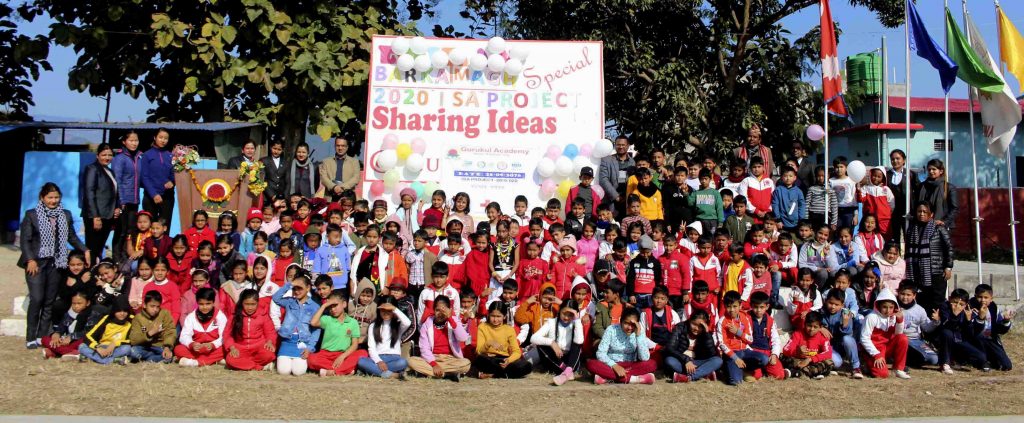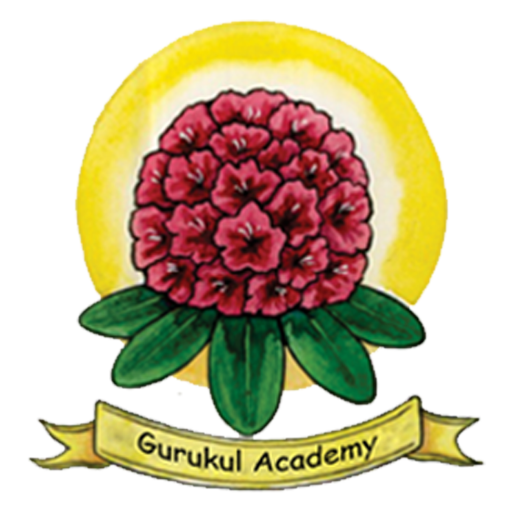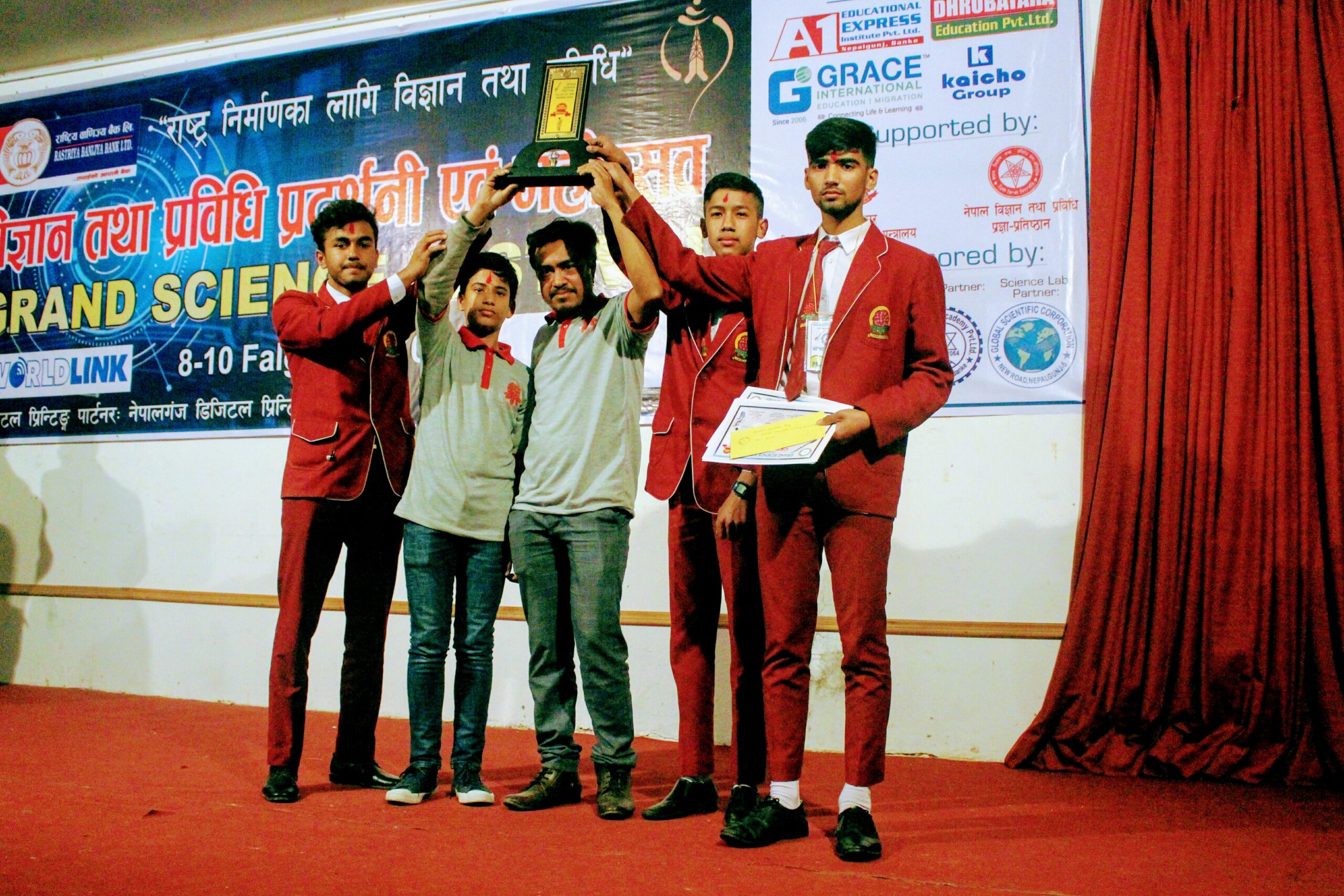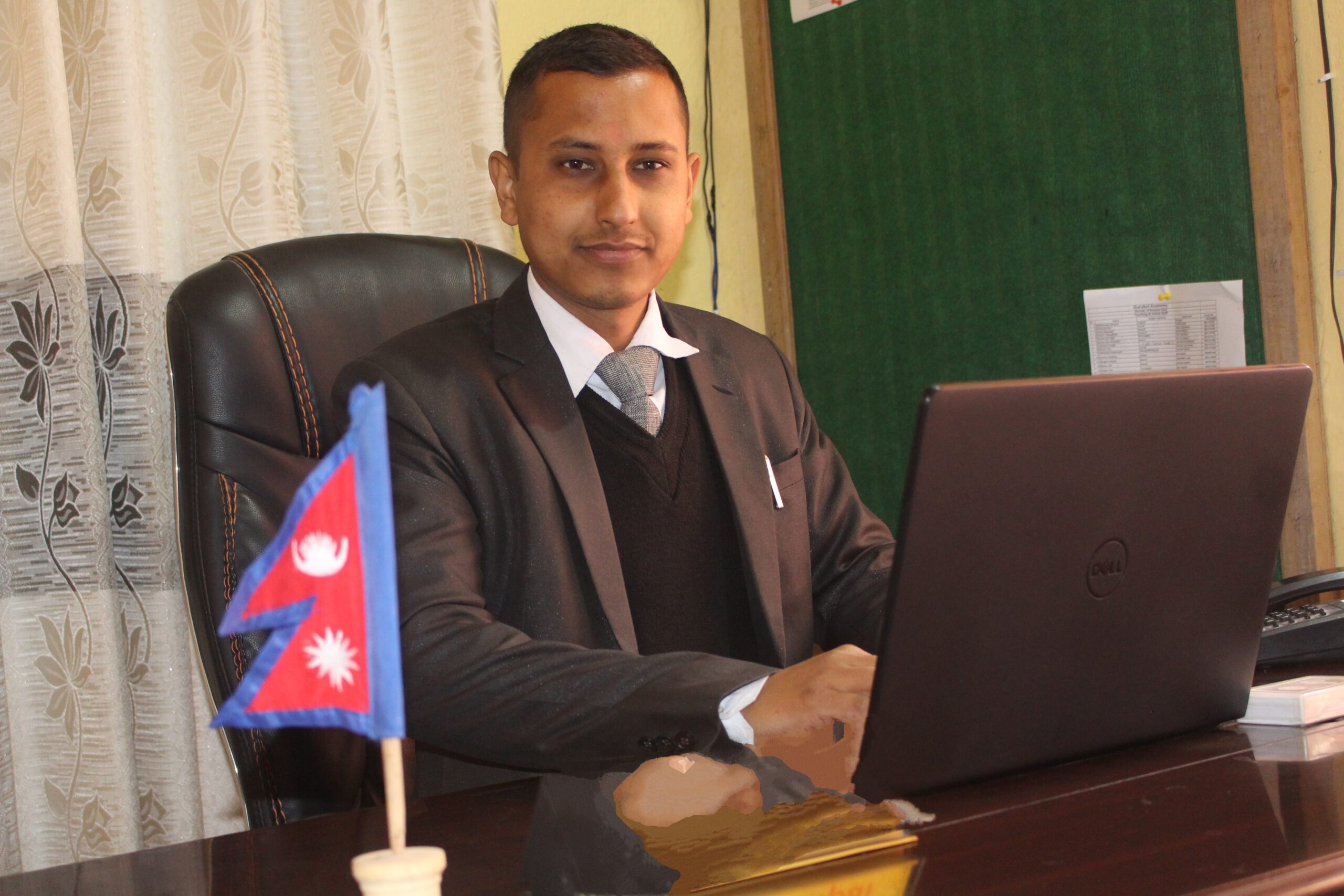
About Us
Our School has provided quality education towards society from its existence. Since its establishment, the institution’s contribution has been laudable and it has emerged as one of the leading educational institutions of the country. Under the visionary personality of founder members of the institute, the school got perfect guidance of his in-born managerial skills and devotion to uplift the standards of education of his motherland. They always dream of providing good quality education within the reach of average middle-class family and directed all of his activities for the fulfillment of his dream. The tree planted by him flourished in quick time and started producing quality manpower for the development of the country. The school is recognized for its progressive education with a definite accent on Nepali culture and traditions.
It provides a host of activities and the curriculum is so planned that it suits the different stages of development. The school’s achievement in academics has been remarkable with almost cent percent results and an overwhelming majority in the top bracket in the examinations conducted by according to rules and regulations of education in the kingdom of Nepal. Every year, a number of students make it in the medical, engineering and other professional courses. Besides academics, the students have brought laurels to their institutions by exhibiting outstanding performances in the various national level high-school competitions in academics, art, music, dance, and sports. In our school, students are expected to be industrious, disciplined, respectful, obedient and independent in order to derive maximum advantage out of their tenure in school. The school does its best to impart a meaningful educational programme to help the students to develop all-round well-integrated personality with a sense of plurality in every respect that is so essential to the national and individual progress.
Mission
Gurukul Academy inspires and educates students to engage their hearts, minds and hands to cultivate their full individual and collective potential in the service of a greater good.
School Enviroment
The school has a proactive infrastructure at Ghorahi-15, Ratanpur, Dang for the holistic development of each child. The total area of the school is 2 bighas. and the total area of the playground is 35,000sq. ft. The school building consists of four blocks comprising spacious and airy classrooms, library,, primary health care audio-visual class rooms, computer rooms, laboratories and room for creative activities such as art, painting, music ,vocal, drama, karate, swimming, scout, Lions Club, and Junior Red Cross Society, Lio Club and dance. There are two sectors in school Gurukul Montesorri( Pre-primary and Gurukul Academy Secondary level.
The physical environment of school buildings and school grounds is a key factor in the overall health and safety of students, staff, and visitors. School buildings and grounds must be designed and maintained to be free of health and safety hazards, and to promote learning. We know that student achievement can be affected either positively or negatively by the school environment. Policies and protocols must be in place to ensure food protection, sanitation, safe water supply, healthy air quality, good lighting, safe playgrounds, violence prevention, and emergency response, among other issues that relate to the physical environment of schools.
Well-designed schools can positively affect learning by focusing on issues such as location, building materials, size of classrooms, furniture and the inclusion of auxiliary facilities. Beyond the basic school infra¬structure, the built environment can also become a powerful support for learning by emphasizing literacy-rich displays and elements that reinforce the use of scientific and mathematical skills.
Education Level
Now, In the Twenty-first Century, the quality of education level is very important and the level of education should maintain very high. Education level continuous maintain Progressive nature is the responsibility of the school and should be managed through school resources. We constantly endeavor to move away from the darkness to light. Through years of persistence, dedication and sustained efforts, our actions ensure an adequate number of opportunities are provided to all who enter our rolls. Structured avenues for expression allow our students to express themselves as individuals while inculcating a grounded value system that has been promulgated for generations. Reinforcing these beliefs the school’s value systems are based on principles of sound moral character, commitment to a righteous cause which is achieved through consistency in our actions
Learning Environment
Learning environment refers to the diverse physical locations, contexts, and cultures in which students learn. Since students may learn in a wide variety of settings, such as outside-of-school locations and outdoor environments, the term is often used as a more accurate or preferred alternative to classroom, which has more limited and traditional connotations—a room with rows of desks and a chalkboard, for example.
Relation between Teacher & Student
The teacher student relationship is very important for children. Children spend approximately 5 to 7 hours a day with a teacher for almost 10 months. We ask ourselves what is considered a good teacher? All of us have gone through schooling, and if fortunate had a favorite teacher. A positive relationship between the student and the teacher is difficult to establish, but can be found for both individuals at either end. The qualities for a positive relationship can vary to set a learning experience approachable and inviting the students to learn. A teacher and student who have the qualities of good communications, respect in a classroom, and show interest in teaching from the point of view of the teacher and learning from a student will establish a positive relationship in the classroom. I will be focusing on the relationship between the student and teacher, involving a setting in the primary grades, which I have found second grade to be extremely important for the student to gain a positive attitude for their future education. Children have different strategies for learning and achieving their goals. A few students in a classroom will grasp and learn quickly, but at the same time there will be those who have to be repeatedly taught using different techniques for the student to be able to understand the lesson. On the other hand, there are those students who fool around and use school as entertainment. Teaching then becomes difficult, especially if there is no proper communication. Yet, teachers, creating a positive relationship with their students, will not necessarily control of all the disruptive students.
The key is, teachers need to continuously monitor the student in order for him or her to be aware of any difficulties the student is having. Understanding the child’s problem, fear, or confusion will give the teacher a better understanding the child’s learning difficulties. Once the teacher becomes aware of the problems, he or she will have more patience with the student, thus making the child feel secure or less confused when learning is taking place in the classroom.
The communication between the student and the teacher serves as a connection between the two, which provides a better atmosphere for a classroom environment. Of course a teacher is not going to understand every problem for every child in his or her classroom, but will acquire enough information for those students who are struggling with specific tasks. A significant body of research indicates that “academic achievement and student behavior are influenced by the quality of the teacher and student relationship”. The more the teacher connects or communicates with his or her students, the more likely they will be able to help students learn at a high level and accomplish quickly.
Extra Curricular Activities
Extra Curricular Activities are valued and accepted part of our school’s curriculum, contributing to the development of the whole child. It provides a vehicle for social, physical, emotional and moral learning and is an important expression of our culture. The participation, enjoyment and skill development of our students is the corner-stone of the school sport/ physical activity program. All our students take part in this program.
In keeping with our understanding that children thrive in a non-competitive environment, we minimize competitive sports. We place more emphasis on exercise, games and skills training. As children grow in confidence and emotional maturity, competitive games can be undertaken with less risk of discouraging those who are still developing their skills. This promotes greater participation, more enjoyment and ultimately more likelihood of being physically active for life. In summary, the purpose of physical training at Our School is to:
- Enjoy physical activity, including exercise, informal games and organized sport.
- Establish habits of physical activity for a life-long pattern of good health.
- Develop gross- and fine motor abilities, muscle strength, fitness, co-ordination and poise.
- Experience success as doing your personal best, not beating someone else.
- Understand and appreciate integrity in sport.
- Practice good sportsmanship, both individually and in teamwork.
- The end-users of products and services.



